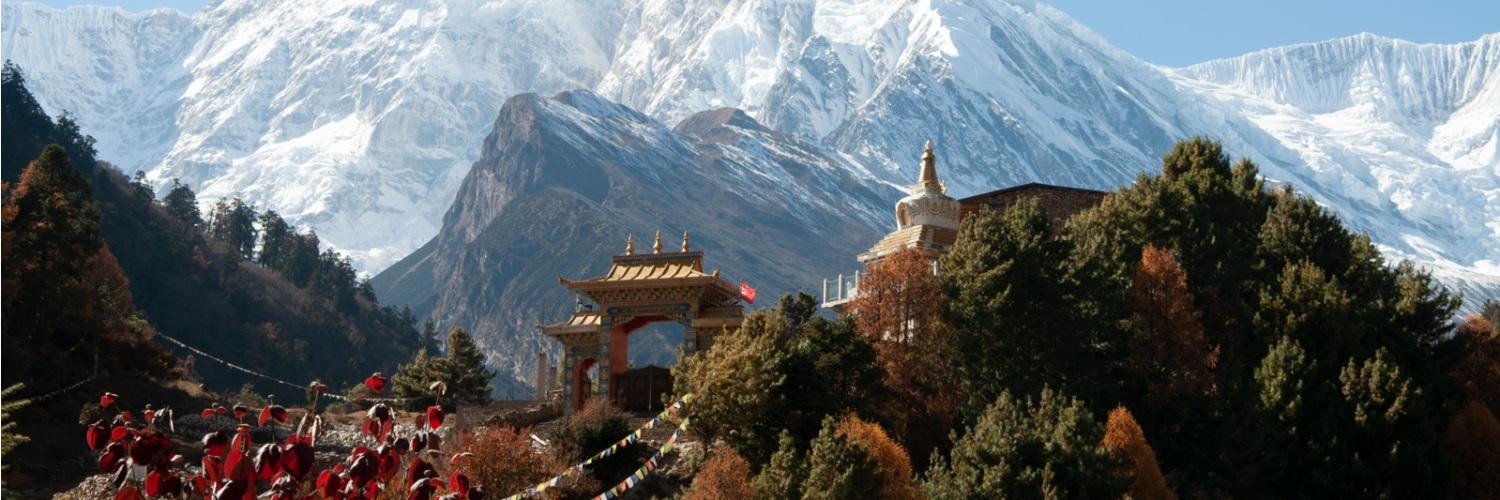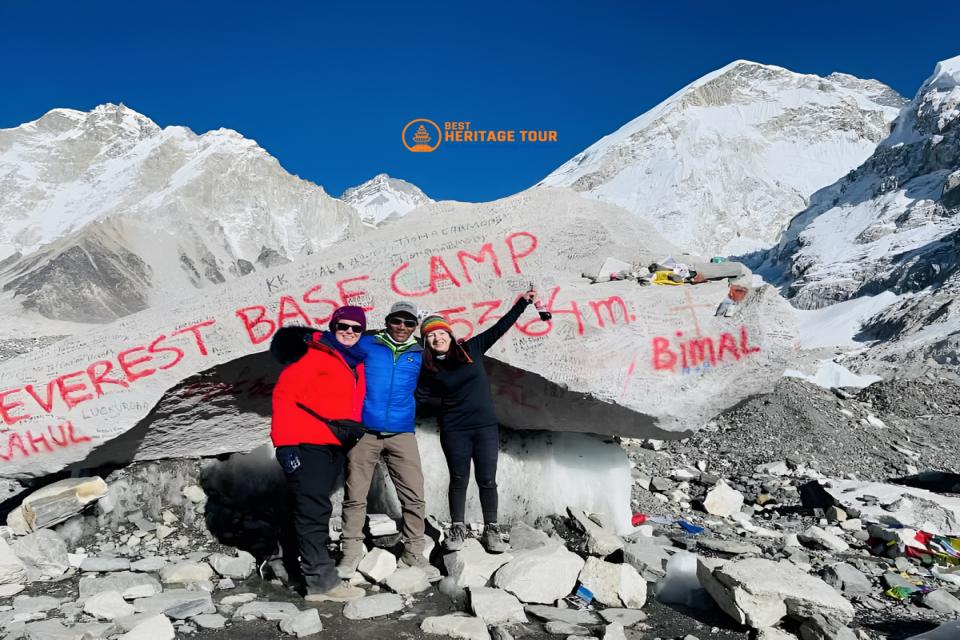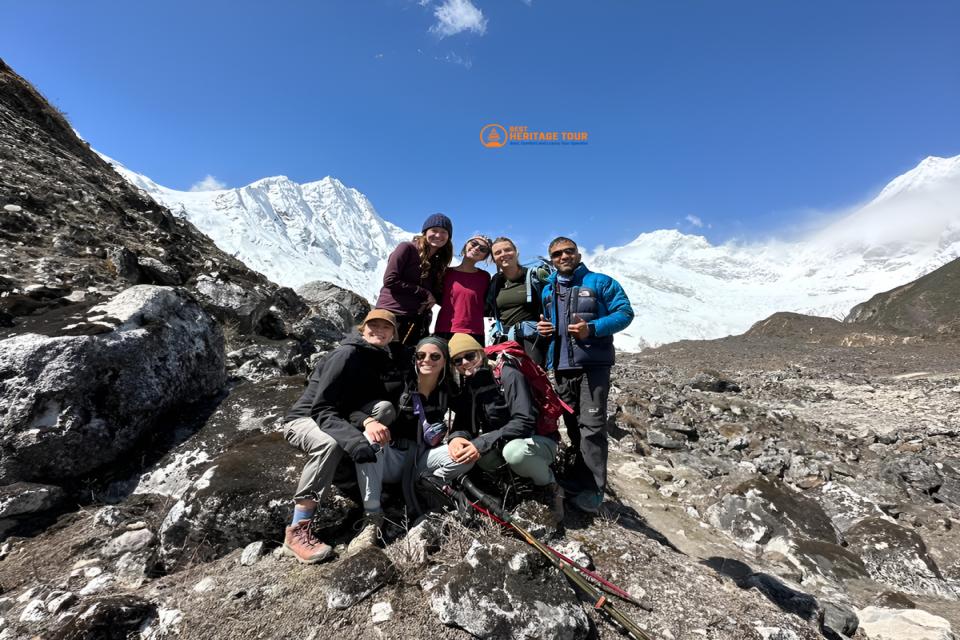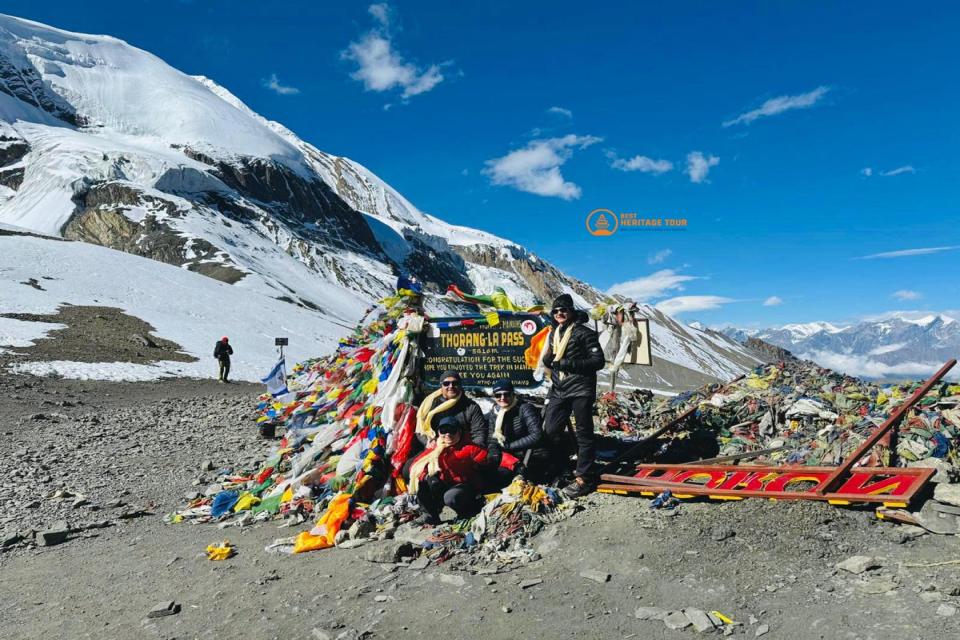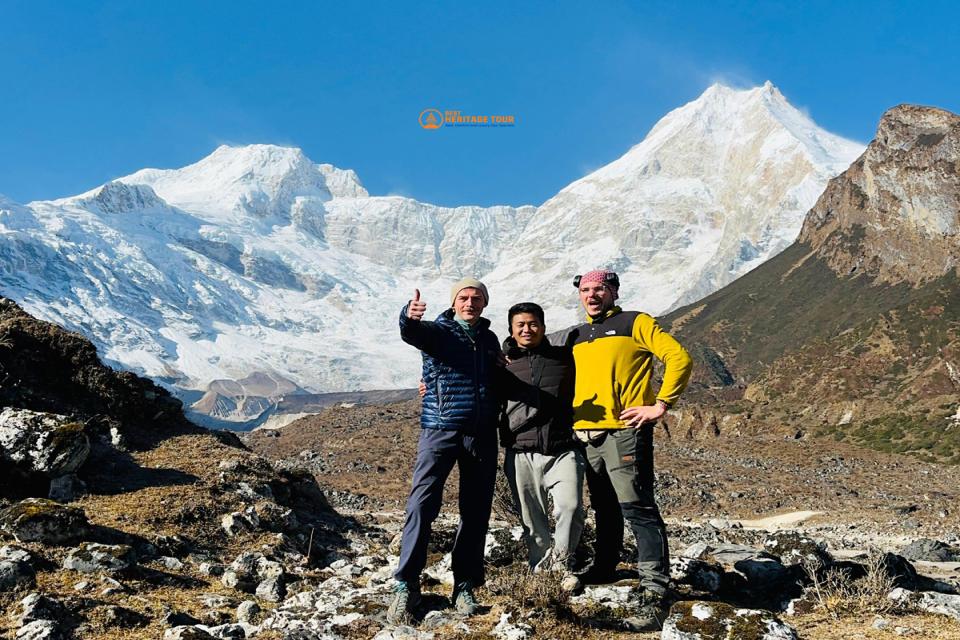Nestled in the heart of Nepal, the Manaslu Circuit and Tsum Valley treks have emerged as two of the most captivating yet lesser-explored trekking destinations. Both routes offer breathtaking Himalayan panoramas, rich cultural experiences, and a chance to journey off the beaten path. Whether you're drawn by the challenging terrain of the Manaslu Circuit or the serene, spiritual ambiance of Tsum Valley, these treks promise unforgettable adventures.
In this comprehensive comparison, we dive deep into the key aspects of each trek location, difficulty, scenery, culture, permits, costs, and more to help you decide which trek suits your preferences and trekking goals best. Ready to explore Nepal’s hidden gems? Let’s get started.
Location and Accessibility
Manaslu Circuit Trek
-
Location: The Manaslu Circuit encircles the majestic Manaslu, the world’s eighth-highest peak at 8,163 meters (26,781 feet). Located in Nepal’s west-central region, this trek passes through the districts of Gorkha and Lamjung, offering a stunning blend of high mountain passes, deep valleys, and traditional villages.
-
Accessibility: The Manaslu Circuit trek commonly begins from Soti Khola, reachable by a 7-8 hour drive from Kathmandu. The journey includes bumpy mountain roads, often serviced by a jeep or a tourist bus. The remoteness of the area adds to the adventure but requires careful planning, especially during monsoon seasons.
Tsum Valley Trek
-
Location: Tsum Valley, a hidden Himalayan valley within the Gorkha district, lies north of the Manaslu Circuit’s main trail. Known for its rich Tibetan Buddhist heritage and pristine nature, the valley is increasingly popular for trekkers seeking tranquility and spiritual immersion.
-
Accessibility: The trek usually starts from Arughat Bazaar, which is about 7 hours by road from Kathmandu. From Arughat, travelers drive to Soti Khola or Machha Khola, entry points to the Tsum Valley trek. Road conditions vary, and landslides during monsoon can impact accessibility.
Trekking Route and Duration
-
Manaslu Circuit Itinerary and Distance: The full Manaslu Circuit trek covers approximately 177 kilometers (110 miles), looping around Mount Manaslu. Typical itineraries last between 14 to 18 days, depending on acclimatization and pace. The trek crosses the famous Larkya La Pass at 5,160 meters (16,929 feet), which is the highest and most challenging point of the route.
-
Tsum Valley Trek Itinerary and Distance: The Tsum Valley trek is shorter and more specialized, focusing on the exploration of the sacred valley itself. Most itineraries span 10 to 12 days, covering around 65 kilometers (40 miles) in total. The route passes through traditional Tibetan Buddhist villages, monasteries, and pristine forests but avoids extremely high passes like those on the Manaslu Circuit.
Difficulty Level and Physical Requirements
-
Manaslu Circuit Difficulty: The Manaslu Circuit is considered a moderately to highly difficult trek, suitable for experienced trekkers with good physical fitness. The altitude gain is significant, with prolonged high passes and rugged terrain. The Larkya La Pass requires endurance and acclimatization to prevent altitude sickness. Weather can be unpredictable, adding to the challenge.
-
Tsum Valley Trek Difficulty: Tsum Valley is generally less demanding compared to the Manaslu Circuit, making it suitable for intermediate trekkers. While the trail does reach elevations of about 3,700 meters (12,139 feet), the terrain is less steep and more gradual. The trek offers a gentler acclimatization profile and less exposure to extreme weather, making it accessible for those looking for cultural immersion with moderate physical exertion.
Scenery and Highlights
-
Manaslu Circuit: Majestic Mountain Views and Rugged Wilderness
The Manaslu Circuit rewards trekkers with some of Nepal’s most dramatic Himalayan landscapes. Towering snow-capped peaks like Manaslu itself, Himalchuli, and Ganesh Himal dominate the skyline. The route weaves through lush rhododendron forests, alpine meadows, and deep river gorges, creating a spectacular contrast of ecosystems. Crossing the Larkya La Pass offers panoramic views that make the strenuous climb worthwhile.
Wildlife enthusiasts may spot red pandas, Himalayan tahrs, and a variety of birds native to the region. The sense of remoteness and wilderness is palpable, as the trail sees fewer crowds compared to the Annapurna or Everest regions.
-
Tsum Valley: Spiritual Serenity Amidst Pristine Nature
Tsum Valley is famed for its tranquil atmosphere and pristine natural beauty. The valley is carpeted with dense forests of pine and oak, alpine meadows, and clear streams. The snow-capped peaks of Ganesh Himal and Himalchuli surround the valley, providing breathtaking backdrops.
Beyond nature, the valley’s major highlight is its rich Tibetan Buddhist culture; ancient monasteries, mani walls, and traditional villages offer a deep cultural experience. The untouched landscape and sacred sites create a peaceful environment, ideal for those seeking spiritual growth and nature immersion.
Cultural Experience
-
Manaslu Circuit: A Cultural Mosaic of Ethnic Groups
The Manaslu region is home to diverse ethnic groups including Gurung, Tamang, and Tibetan-influenced communities. Trekkers encounter traditional stone houses, prayer flags fluttering in the mountain breeze, and local festivals that celebrate the region’s heritage. The blend of Hindu and Buddhist practices enriches the cultural tapestry.
Villages like Sama and Deng offer a glimpse into daily mountain life, with warm hospitality and local handicrafts available to curious visitors. The interaction with locals on the Manaslu Circuit provides a rewarding cultural dimension to the trek.
-
Tsum Valley: Deep Buddhist Roots and Sacred Traditions
Tsum Valley is one of Nepal’s last sacred Himalayan valleys, preserving Tibetan Buddhist traditions with remarkable purity. The valley’s residents practice ancient rituals and maintain monasteries dating back hundreds of years, such as Mu Gompa and Rachen Gompa.
The valley hosts several vibrant festivals like Lhosar (Tibetan New Year), where monks perform mask dances and prayers. Trekkers can learn about unique Buddhist philosophies and meditation practices from the locals, making this trek a profound cultural journey.
Accommodation and Facilities
-
Manaslu Circuit: Basic Teahouses and Camping Options
Accommodation on the Manaslu Circuit is primarily in basic teahouses offering simple rooms with shared bathrooms. Facilities have improved over the years but remain rustic compared to more commercial trekking routes. Due to the trek’s growing popularity, more teahouses have emerged along the route, but travelers should be prepared for modest amenities.
Camping is sometimes preferred on more remote sections or for groups seeking flexibility. Food options typically include staple Nepali and Tibetan dishes such as dal bhat, noodles, and soups.
-
Tsum Valley: Traditional Lodges with Authentic Charm
In Tsum Valley, accommodation is more limited but charmingly traditional. Small lodges and teahouses blend seamlessly with the natural environment, providing cozy stays often run by local families. Hot showers and Wi-Fi may be scarce or unavailable, adding to the rustic experience.
Meals usually consist of local Tibetan-style cuisine, and staying in the valley supports local communities directly. Clean water sources are accessible but carrying purification methods is advisable.
Permits and Regulations
-
Manaslu Circuit Trek Permits
Trekking the Manaslu Circuit requires a Restricted Area Permit (RAP), which helps protect the fragile environment and indigenous cultures. The RAP is issued by the Nepal government and costs around USD 70 per week per person (rates may vary). Trekkers must also obtain the Manaslu Conservation Area Permit (MCAP), which supports conservation efforts in the region.
A TIMS (Trekkers’ Information Management System) card is also mandatory. Permits can be arranged through registered trekking agencies or independently at Kathmandu’s Department of Immigration.
-
Tsum Valley Trek Permits
Tsum Valley lies within the same restricted area, so trekkers need both the Restricted Area Permit and MCAP to enter. Because the valley is more secluded, authorities strictly monitor permits to preserve its cultural and ecological integrity. The costs and permit process are the same as for the Manaslu Circuit.
It’s important to carry your permits with you throughout the trek, as checkpoints along the route require verification. Hiring a guide or porter is often compulsory in this region for safety and regulation compliance.
Best Time to Trek
-
Manaslu Circuit: Ideal Seasons for Trekking
The best times to trek the Manaslu Circuit are autumn (September to November) and spring (March to May). During these months, the weather is stable, skies are clear, and the temperatures are moderate, providing spectacular mountain views and comfortable trekking conditions.
Monsoon season (June to August) is generally avoided due to heavy rainfall, landslides, and slippery trails. Winter (December to February) is cold, especially at higher altitudes, but can still be done by well-prepared trekkers.
-
Tsum Valley: When to Visit for Best Experience
Similarly, autumn and spring are the prime trekking seasons for Tsum Valley. These periods feature mild weather, blooming rhododendrons, and clear mountain vistas. The valley’s sheltered location sometimes offers better snow-free access during early spring.
Winter trekking is challenging due to cold temperatures and possible snow blockages, while monsoon rains can make the trail hazardous.
Costs and Budget
Manaslu Circuit Trek Expenses
- Permits: Approximately USD 100–150 (RAP + MCAP + TIMS)
- Guide and Porter: USD 25–35 per day for guides; USD 15–20 for porters
- Accommodation: $5–10 per night in teahouses
- Food: $5–10 per meal (dal bhat is cheaper)
- Transport: Around $30–50 for jeep/bus Kathmandu to Soti Khola
- Miscellaneous: Gear rental, tips, insurance
Overall, budget travelers can manage the trek for around USD 800–1200 excluding international flights.
Tsum Valley Trek Expenses
- Permits: Same as Manaslu Circuit (RAP + MCAP + TIMS)
- Guide and Porter: Usually mandatory; similar pricing as Manaslu
- Accommodation: $4–8 per night; fewer options mean slightly higher prices
- Food: $5–10 per meal
- Transport: About $25–40 from Kathmandu to Arughat or Soti Khola
- Other Costs: Similar gear and insurance expenses
Tsum Valley trek tends to be a bit cheaper due to shorter duration, with budgets around USD 600–900.
Safety and Health Considerations
-
Altitude Sickness and Acclimatization: Both Manaslu Circuit and Tsum Valley reach significant altitudes, with Manaslu crossing 5,160 meters and Tsum Valley reaching approximately 3,700 meters. Altitude sickness is a real risk, especially on the Manaslu Circuit. Proper acclimatization, gradual ascent, hydration, and awareness of symptoms are essential.
-
Emergency Services and Evacuation: Medical facilities in these regions are basic. Helicopter evacuations are possible but costly and weather-dependent. Trekking with a guide increases safety, as they are trained to respond to emergencies. Carrying a first aid kit, altitude sickness medication, and travel insurance with evacuation coverage is strongly recommended.
Environmental Impact and Responsible Trekking
-
Conservation Efforts in Manaslu and Tsum Valley
Both the Manaslu Circuit and Tsum Valley lie within protected areas aimed at preserving Nepal’s unique biodiversity and cultural heritage. The Manaslu Conservation Area Project works to balance trekking tourism with environmental sustainability, supporting local communities and wildlife protection.
Tsum Valley, being a sacred Himalayan valley, benefits from strict regulations to limit visitor numbers and reduce human impact. Trekkers are encouraged to follow guidelines that protect fragile ecosystems and sacred sites.
-
Tips for Responsible Trekking
- Carry out all trash: Pack out what you bring in; avoid littering
- Use eco-friendly products: Biodegradable soaps and minimal plastic use
- Respect local culture: Seek permission before photographing locals or sacred places
- Stay on marked trails: Prevent trail erosion and protect vegetation
- Support local businesses: Purchase supplies and services from local communities to aid their economy
- Limit campfires: Use portable stoves to reduce deforestation risks
By trekking responsibly, adventurers help preserve the pristine beauty and cultural richness of these remarkable regions for generations to come.
Conclusion: Which Trek Should You Choose?
Both the Manaslu Circuit and Tsum Valley treks offer exceptional Himalayan experiences, yet they cater to different kinds of trekkers.
- If you crave a physically challenging adventure with epic high-altitude mountain passes, longer trekking days, and a wild, rugged environment, the Manaslu Circuit is an excellent choice. It’s ideal for experienced trekkers ready to test their endurance and savor dramatic mountain vistas.
- If you prefer a culturally immersive and spiritually enriching journey that is moderately difficult with beautiful Tibetan Buddhist monasteries, peaceful villages, and a quieter trail, then Tsum Valley is your perfect match. It suits intermediate trekkers and those wanting a deeper connection to Himalayan culture.
For avid trekking enthusiasts with time and resources, combining both treks offers the ultimate exploration of Nepal’s hidden treasures.
Whichever route you choose, the Manaslu Circuit and Tsum Valley treks promise breathtaking scenery, warm hospitality, and memories that will last a lifetime. Prepare well, respect the environment, and embark on your Himalayan adventure with confidence!
Ready to Choose Your Perfect Trek in Manaslu or Tsum Valley for 2025/2026? Whether you’re seeking the challenging high passes of the Manaslu Circuit or the serene cultural immersion of Tsum Valley, Best Heritage Tour offers expert local guides, hassle-free permits, reliable transport, and fully customized trekking plans. Focus on your adventure, we handle the rest!
Book your trek or get more info today:
- Phone/WhatsApp/Viber: +9779851149197 / +9779810043046
- Email: bestheritagetour@gmail.com / info@bestheritagetour.com
- Website: www.bestheritagetour.com
- Location: Thamel Marg, Kathmandu, Nepal
Secure your spot now and experience the ultimate Himalayan journey with trusted local experts!
Author: Best Heritage Tour
Date: 22nd June, 2025

